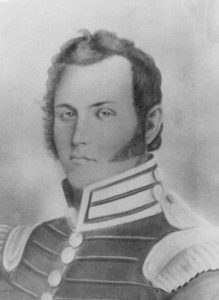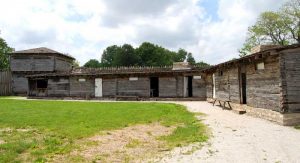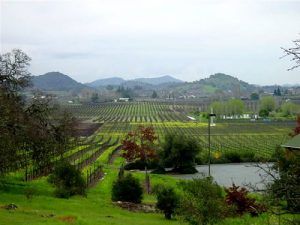John Gantt was a soldier, trapper, trader, and guide who primarily worked in the Rocky Mountains.
Gantt was born at Queen Anne, Maryland, in 1791 to Edward and Ann Stoughton Sloss and was the youngest of 15 children. His father was highly distinguished and well-educated, holding a doctorate in medicine and divinity. He was also a fellow of the Royal Society and served five terms as Chaplain of the United States Senate.
When Edward Gantt retired in 1808, he moved with his family to Kentucky. In March 1817, John Gantt enlisted in the army in Boston, Massachusetts, spending 12 years in service, eventually rising to the rank of captain. He served at several frontier posts and was with Colonel Henry Leavenworth during the Arikara War in 1823. In 1825, he was with Colonel Henry Atkinson and Major Stephen Harriman Long’s Yellowstone expedition.
In 1827 Gantt married Virginia McClanahan, with whom he had one son. On May 12, 1829, he was found guilty of falsifying pay accounts and was dismissed from the army. In 1830, he joined Jefferson Blackwell in a fur trading partnership.
Gantt and Blackwell departed St. Louis, Missouri, with 60-70 men in April 1831. They followed the Missouri River to Fort Osage, Missouri, before continuing along the Kansas and Republican Rivers. They then made their way to the North Platte River in Nebraska and followed to the mouth of the Laramie River, which they reached in August 1831. There, they encountered Thomas Fitzpatrick with a party of men bringing supplies up from Santa Fe, New Mexico, for the Rocky Mountain Fur Company.
Dividing their men into three companies, they soon began operations in the upper Rocky Mountains. Later, they moved to the upper Arkansas River, where they established a trading post named Fort Cass near present-day Pueblo, Colorado. They were the first to trade with the Arapaho and Cheyenne tribes in any volume. However, trapping did not produce the success they had hoped for due to theft, fraud, accidents, and other misfortunes. The firm went out of business in 1834, and Gantt helped William Bent establish Bent’s Fort.
In the summer of 1835, Gantt guided Henry Dodge’s expedition to the Colorado Rockies and served as a liaison with the Indian chiefs. Afterward, Gantt returned to Missouri, where he partnered with William Stoner to mine and sell coal from a property owned by William Sublette.
In 1838-39, Gantt served as an Indian agent for the Potawatomi tribe at Council Bluffs, Iowa. By 1843, he was again acting as a guide, leading a large group of emigrants along the Oregon Trail from Independence, Missouri, to Fort Hall, Idaho. He then went to California, where he lived the rest of his life. In 1847, he formed a partnership to construct a sawmill in Napa Valley.
John Gantt died of heart trouble on February 14, 1849, at the ranch of George Yount, another former mountain man. He was buried in the Yountville cemetery.
©Kathy Alexander/Legends of America, updated November 2022.
Also See:
Trappers, Traders & Pathfinders
Sources:
Find A Grave
Mountain Men of the Rocky Mountain West
Thrapp, Dan L.; Encyclopedia of Frontier Biography, Volumes 1-3, Bison Books, 1991



